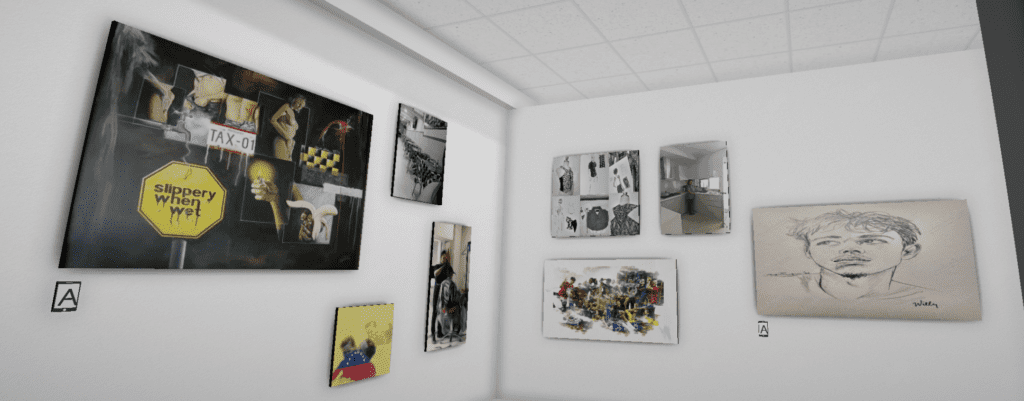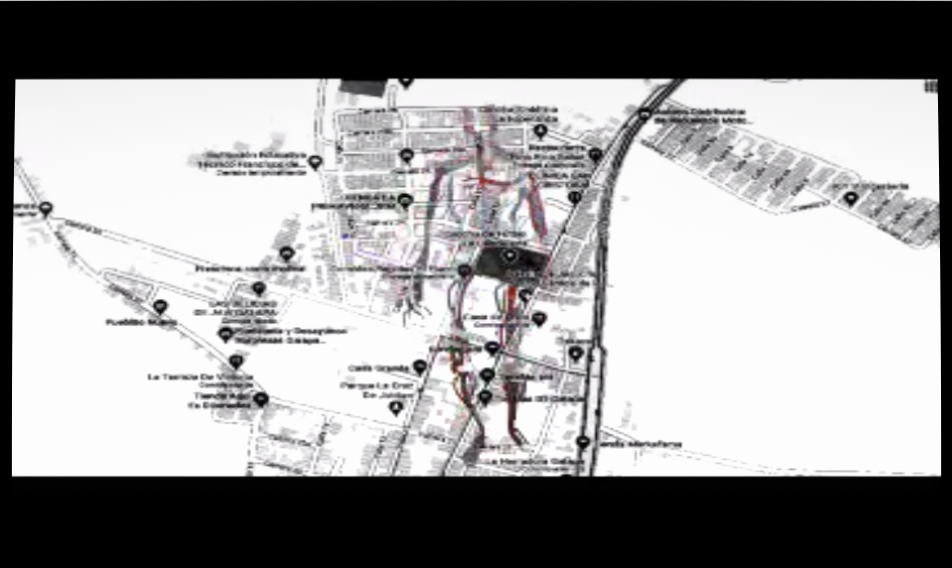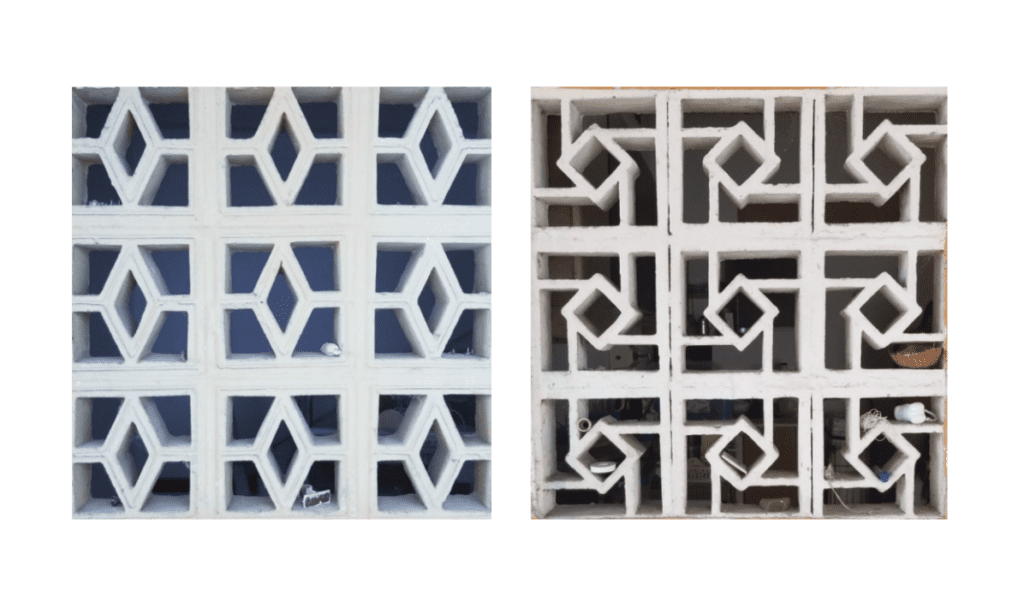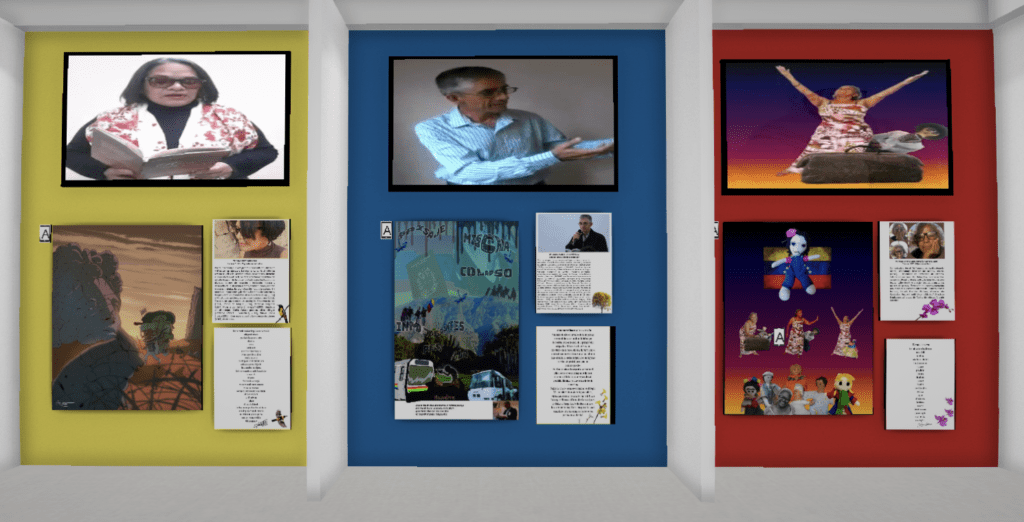*View the interactive works in the virtual gallery.
*Acceda al folleto “MI HISTORIA. MUCHAS HISTORIAS.” para leer biografías de los artistas y descripciones de los proyectos en español e inglés.

Boundless Body by José Álvarez
Does our body have borders? Does the land that we stand on have borders?
Where do they start and where do they end? Which is the grain of sand that marks the beginning and the end of a territory?
I’m captivated by what the ever-changing notion of being in constant motion, never still, represents for our bodies. And even though the term “boundless” may be precise for body and territory, my drive in relation to them is a bit more related to perception, a matter that is renewed day after day, at all times…
I used the element of sand, which points toward stillness, to analyze how interesting it is to discuss boundaries, that there isn’t one grain of sand that defines where a zone, territory, or nation begins or ends. In protecting my body with this element led me to appreciate the boundaries of the body. Our body is a suitcase in which we carry a whole world of possibilities.

Crisisnética by William Castro Atencia
Crisisnética is a visual, collective story woven together by the voices of Venezuelan migrants anonymously sharing their life stories. Moved by their different feelings about the crisis that their country is facing today, the situation has been further compounded by the COVID-19 health crisis. At a place (Colombia) where they all coincided in their confinement and where they continue to work everyday for the livelihoods of their families, they demonstrate how much we can still be in motion despite the stillness caused by quarantines and stay-at-home orders.

Illicit Pathways by Lorenzo Miranda
Illicit Pathways is a stop-motion video created from experiences during the quarantine imposed by the national government of Colombia due to the COVID-19 pandemic. In it, fragments of the everyday life of the artist are shown, revealing the dynamics resulting from living under a lockdown with the fear of imminent contagion. In the video, a cartography of the artist’s neighborhood is shown, and we see the stores and drugstores that he has to visit in order to get supplies illegally, defying the borders of gender-based restriction and the locally and nationally mandated curfews. All of it to look after his mother, who is under his care. Amidst so much relative stillness, chaos emanates from subtle places that sometimes allow for a great creative idea and sometimes destroys it but, in the end, the decisions that were made prevail.

Malvis Ortega by Ernesto Recuero
Movement is associated with the displacement of things and individuals; oftentimes that condition is related to territory. The house becomes a territory and windows become our boundary, our borders, lines that separate the public from the private, where we
move from side to side inside a fixed territory, one that is still but that inhabits the virtual dimension when we delve into the imaginary and the image that is produced by recording our everyday life.

The Oasis was a River by Carolina Valencia Bula
The heavy droughts, the border, and the absence of the state in fulfilling the basic needs of the people in the territory of la Guajira have conditioned the survival of its inhabitants, a great part of whom are members of the Wayuú indigenous community. They were promised solutions many years ago, instead of that, their only river was diverted and they have been left thirstier than before. I gathered many of them in a single landscape to show their strength as a community, hoping that one day the news on the TV will reflect their hopes.

by Adolfo Garcia and Heidy Helena Mejia Sanchez
Poetry is expanded to other transmedia narratives such as illustration, video and augmented reality, and connected to the life stories of its creators, Venezuelan migrant artists, aims to elevate it to an anti-revolutionary artistic experience. The protagonists of this exhibit: Marcelina, William, Yadira, Kabir and Dexi, united their writings and color to co-create, to dream of worlds never dreamed about before or perhaps, so real that they are frightening. Back in Venezuela, their country of origin, they had their homes, their art schools, their jobs at schools and universities. Now, where they are, whether it is Colombia, Peru or Ecuador, they only have their memories, photographs and their art that does not abandon them. They have left their motherland, but their motherland has not left them!
